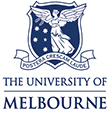A molecular basis underpinning TRBV28+ T-cell receptor recognition of MR1–antigen
Authors:
- Awad, Wael
- Gherardin, Nicholas A.
- Ciacchi, Lisa
- Keller, Andrew N.
- Liu, Ligong
- Fairlie, David P.
- McCluskey, James
- Godfrey, Dale I.
- Rossjohn, Jamie
Details:
Journal of Biological Chemistry, Volume 301, Issue 8, 2025-08-31
Article Link: Click here
Mucosal-associated invariant T (MAIT) cells express a TRAV1-2+ T-cell receptor (TCR) that recognizes microbial vitamin B2 derivatives presented by the major histocompatibility complex class I–related molecule (MR1). Most MAIT TCRs incorporate a biased TCR-β repertoire, predominantly TRBV20-1 and TRBV6, but some utilize other trbv genes, including TRBV28. A second conserved, albeit less frequent TRAV36+ TRBV28+ T-cell population exhibits MAIT-like phenotypic features but use a markedly distinct mode of MR1–antigen (Ag) recognition compared with MAIT TCR–MR1 binding. Nevertheless, our understanding of how differing TCR gene usage results in altered MR1 binding modes remains incomplete. Here, binding studies demonstrated differential affinities and Ag specificities between TRBV6+ and TRBV28+ MR1-restricted TCRs. Alanine-scanning mutagenesis on the TRAV36–TRBV28 TCR revealed a strong dependence on germline-encoded residues within the highly selected complementarity-determining region 3α loop, similar to TRAV1-2–TRBV6 TCRs, and further alanine-scanning mutagenesis experiments demonstrate differential energetic footprints by these TCRs atop MR1. We determined the crystal structure of a MAIT TRAV1-2–TRBV28+ TCR–MR1–5-OP-RU ternary complex. This structure revealed a docking mode conserved amongst other TRAV1-2+ MAIT TCRs, with the trbv 28-encoded TCR-β chain adopting highly distinct docking modes between the TRAV1-2+ and TRAV36+ TCRs. This indicates that the TCR-α chain dictates the positioning and role of the TCR-β chain. Taken together, these findings provide new molecular insights into MR1–Ag-driven selection of paired TCR-α and TCR-β chains.


